TRENDING FASHION IN HOLY SEE
April 26, 2023
What is the difference between the iphone 15 pro and the 15 pro max?
August 7, 2024Slovenia is a nation in Central Europe, formally known as the Republic of Slovenia. It shares borders with Croatia to the southeast, Hungary to the northeast, Austria to the north, Italy to the west, and the Adriatic Sea to the southwest. Slovenia has a population of 2.1 million people, and it is 20,271 square kilometers in size, and is largely mountainous and forested. Over 80% of the people in the nation are Slovenes. The official language is Slovene, a South Slavic tongue. Slovenia’s climate is primarily temperate continental, with the exception of the Julian Alps and the Slovene Littoral. The northern extensions of the Dinaric Alps, which run northwest-southeast across the nation, have a sub-mediterranean climate. An alpine climate can be found in the Julian Alps in the northwest. A more well defined continental climate can be found toward the northwestern Pannonian Basin. Geographically, Slovenia’s capital and largest city, Ljubljana, is located close to the nation’s center.
The Human Development Index rates Slovenia as a highly developed nation with a high-income economy. Its income inequality is among the lowest in the world, according to the Gini index. It belongs to the Council of Europe, NATO, the European Union, the Eurozone, the Schengen Area, the OSCE, the OECD, and the United Nations.
TRENDING FASHION IN SLOVENIA










ACCESSORIES IN SLOVENIA






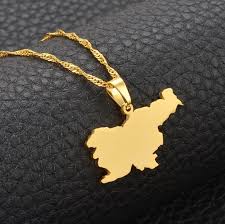







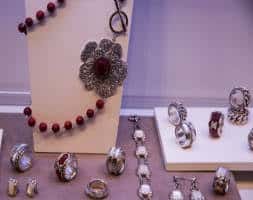









TRIBES IN SLOVENIA AND THEIR FASHION
The women’s festive attire that they wear on stage consists of two or three skirts, underskirts, slacks, red cotton socks, leather shoes or boots, and white linen blouses that have decorative ribbons on the collar, shoulders, or sleeves, while the festive attire for men consists of over-the-knee or low boots, blue socks, woolen or leather leggings, and a linen shirt with decorative ribbons.

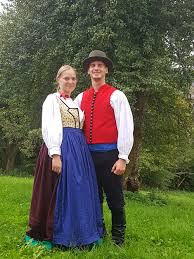


TOURIST AND HISTORICAL PLACES IN SLOVENIA
Vogel – in all of Slovenia, there is a mountain that is 1922 meters high. This location, which is among the best places to visit in Slovenia, is well-known for its ski resort. There is a cable car that travels from Vogel to Lake Bohinj.

Vintgar Gorge – It is a 1.6-meter gorge that is located in Slovenia’s northwest. This gorge attracts lots of tourists from both within the nation and other countries. A lake, rapids, and other erosive characteristics can be found in the stream.

Triglav National Park – Slovenia’s northwest region is home to the Triglav National Park. It is one of the nicest places to visit in Slovenia in the summer because it is situated on the highest summit of the Julian Alps. The natural scenery from here is amazing.

Soča River – this gorgeous river, which flows across Slovenia, is a fantastic tourist destination. Swimming or simply relaxing by the river are both options. In this river with clear water, kayakers can also find adventure.

Preseren Square – it is the main square in Slovenia’s capital, Ljubljana. It is the most well-liked location for gatherings. There are numerous stores and cafes. Pedestrians love to stroll in this area. The majority of the carnivals and concerts take place here.

Predjama – the Renaissance castle is another name for this structure. The castle is essentially situated in the Predjama settlement, which is 9 kilometers from Postojna Cave and roughly 11 kilometers from the town of Postojna. At the entrance to the cave, the castle was erected. Its entrance is intriguing. Most of the buildings are in the Gothic style.

Postojna Cave – It is situated in Slovenia’s southwest region. Additionally, it ranks as the second-longest cave in the entire world. An excellent tourist destination, too. It is the only cave in the entire globe with two railroad tracks.

Maribor – The town is Slovenia’s biggest city. It is located very near the Austrian border. Winemaking is big business in Maribor. Throughout the city, there are numerous wine industries.
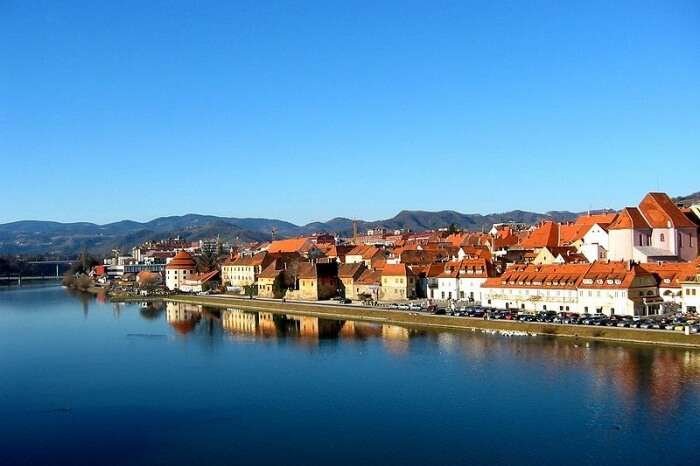
Lake Bohinj – the lake, one of Slovenia’s permanent lakes, is roughly 318 hectares in size. Actually, it is situated in the Julian Alps’ Bohinj valley. Mountains and woods surround the entire lake. The area is quite beautiful in nature.

Lake bled – The lake is a wonderful tourist spot and attraction. It has a sizable collection of many different kinds of fish. Among the common fishes in this area are catfish and European perch.

Bled Castle – The castle, which is currently a famous tourist destination, is said to be among the oldest castles in Slovenia. However, some remodeling work was necessary. From that height, the view seems appealing.

MUSIC IN SLOVENIA
Traditional Slovenian folk music is played on instruments including the fiddle, clarinet, zither, flute, and brass bands of the alpine kind, as well as the Styrian harmonica (the oldest sort of accordion). Velike goslarije is the name for fiddle and cimbalon bands in eastern Slovenia. Various musical instruments, including the Steirische Harmonika, Kontra, Hammered Dulcimer, Cimbalon Grande, and Drone Zither, are used in traditional Slovenian music.
Some musicians in Slovenia include:
Senidah

Iztok Mlakar

Some artwork in Slovenia include:





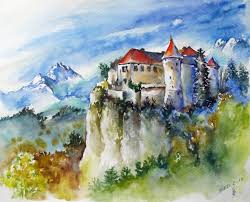
MEALS IN SLOVENIA
Nanoški sir – it is a type of hard cheese made of cow milk from the animals pastured on slopes of the Nanos mountain.
Štajerska kisla juha – it is prepared with pork head, pig’s trotters, garlic, onions, salt, pepper, marjoram, parsley, thyme, apple or wine vinegar, potatoes, sour cream, and flour.
Pohorski lonec – it is a traditional Slovenian stew originating from the Pohorje region.
Bohinjski sir – it is made from raw or thermized cow’s milk.
Belokranjska Povitica – it is a savory treat that combines a creamy cheese-like filling and thin phyllo dough.
Ajdnek – a rustic Slovenian dessert consisting of soft buckwheat dough that is layered with a sweet walnut filling.
Nanoški sir

Štajerska kisla juha

Pohorski lonec

Bohinjski sir

Belokranjska Povitica

Ajdnek

Bujta Repa – this hearty porridge is traditionally prepared with a combination of sour turnip, millet, and pork bones that have some meat and fat on them such as pork head, skin, or neck cuts.
Vipavska jota – this is a traditional Slovenian thick soup or stew originating from the Vipava area.
Leteči žganci – It is made with a combination of chicken wings and legs, flour, eggs, breadcrumbs, salt, and oil.
Ajdovi krapi – a traditional buckwheat dumplings filled with a mixture of cottage cheese and millet porridge.
Blejska grmada – a traditional Slovenian dessert originating from the Bled area.
Bakalca – a traditional Slovenian dish originating from Idrija. it is made of mutton, onions, carrots, white wine, tomatoes, olive oil, bay leaves, thyme, salt, and pepper.
Bujta Repa

Vipavska jota

Leteči žganci

Ajdovi krapi

Blejska grmada

Bakalca

ENVIRONMENTAL CONSERVATION AND HABITAT PROTECTION IN SLOVENIA
One of the most heavily forested nations in Europe is Slovenia. The majority of Slovenia’s woods are found in beech forests, which together with beech-oak and fir-beech forests make up roughly 70% of the country’s total forestland. Slovenia’s forests, which make up 58% of the nation, are a crucial component of the landscape. Slovenia is the third-most wooded nation in the European Union, immediately behind Finland and Sweden. One 177 244 hectares, or around 75 percent of Slovenia’s land, is covered in forests. Less than 1% of the area is covered by the sea.
At least nine indigenous domestic animal breeds have been identified as being in danger of extinction. Slovenia only allows in situ conservation in a few limited locations; the majority of biodiversity protection objectives are met by sustainable land use, such low-intensity farming. The main land use practice that has a considerable economic impact on biodiversity, other from agriculture, is forestry.

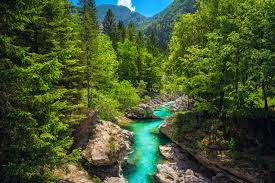








EFFECT OF CLIMATE CHANGE IN SLOVENIA
Slovenia is a country in Central Europe that borders the Alps to the east. Slovenia is bordered to the north by Austria, to the east and south by Croatia, to the west by Italy, and to the southwest by the Adriatic Sea. Slovenia is extremely vulnerable to climate change because of its orographic and climatic characteristics. Slovenia has not yet implemented any climate change adaptation strategies.
Slovenia’s biotic variety is threatened by climate change because the various, smaller, geographically isolated ecosystems that are home to endemic species won’t be able to shift in order to adapt to changed climate zones.
38 percent of the country is made up of agricultural lands. Slovenia’s agriculture industry is anticipated to suffer as a result of the increased frequency and severity of dry spells brought on by climate change. The probability of major weather occurrences could make this worse. Tourism related to winter sports is very significant for Slovenia’s economy. Climate changes could have a negative impact on this industry.










GENDER EQUALITY IN SLOVENIA
Slovenia is ranked 12th in the EU on the Gender Equality Index with 67.6 out of 100 points. Its rating is 0.4 points lower than the EU’s rating.
Tanja Fajon – Slovenian politician, leader of Social Democrats who served as Minister of Foreign and European Affairs in Slovenia.
Katarina Kresal – Slovenian politician who served as Minister of Interior in Slovenia.
Julijana Bizjak Mlakar – Slovenian politician who served as Minister for Culture.
Irene Šinko – Slovenian government official and Lawyer who served as the Ministerd of Agriculture, forest and food in Slovenia.
Tanja Fajon

Katarina Kresal
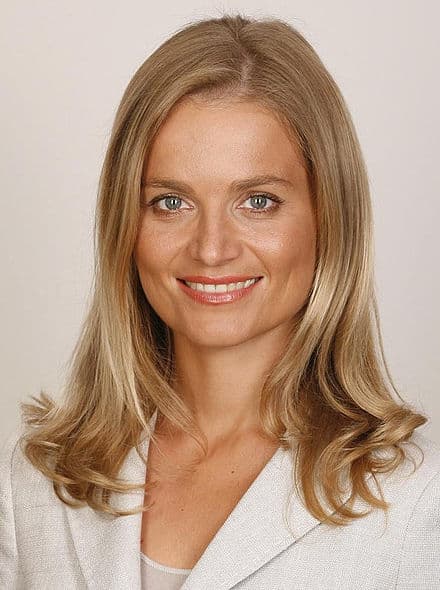
Julijana Bizjak Mlakar

Irene Šinko

Ljudmila Novak – Slovenian politician and member of European Parliament.
Alenka Smerkolj – Slovenian politician who served as acting Minister of Finance.
Barbara Brezigar – Slovenian lawyer and politician who is currently serving as Secretary General at the Ministry of the Interior of Slovenia.
Violeta Bulc – Slovenian politician who served as the European Commissioner for Transport.
Ljudmila Novak

Alenka Smerkolj

Barbara Brezigar

Violeta Bulc




